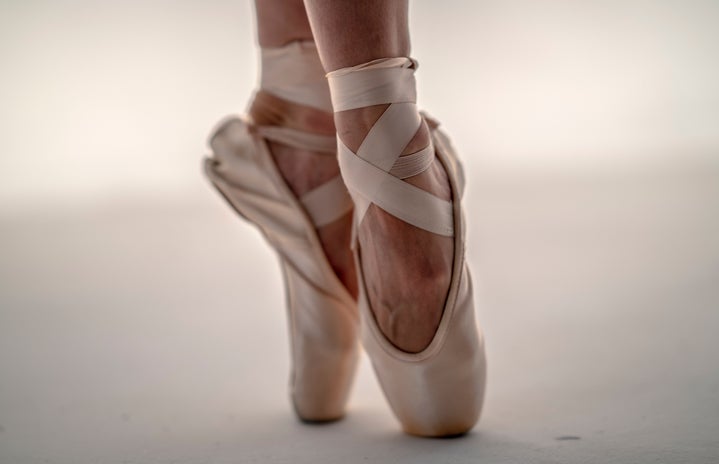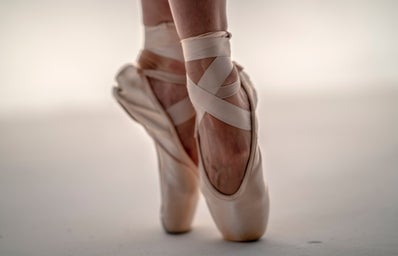The short film “Reflect” was released on October 29, 2022 as a part of the second season of Disney’s “Short Circuit: Experimental Films” series on the streaming platform Disney+. Running only a few minutes long, the short film marks a huge step for body diversity being portrayed within the company’s productions. The film begins with an introduction by the director, Hillary Bradfield, discussing why she wanted to make this project and what she hopes viewers will get out of it. Bradfield stressed that this film is about body positivity and that she hoped viewers will feel more positively about themselves after watching it. She also mentioned that she had the main character be a ballerina because dance is a very unique activity in that it requires you to constantly be looking at and analyzing your body, something that can be very hard to do if you don’t like what you see in the mirror.
Having the lead character in this film be a ballet dancer was a very strategic and important move on Bradfield’s part. Dance is an example of an aesthetic, or appearance-oriented, sport. Other examples of aesthetic sports include gymnastics, cheerleading, swimming, and figure skating. Given that these sports emphasize a specific body shape, it’s probably not surprising that research has shown that participants of these sports (particularly girls) are more likely to struggle with body image concerns than those who participate in non-aesthetic sports (some examples of these are basketball, hockey, and softball). This finding occurs even in extremely young children.
In a 2002 study by Davison et al., researchers examined five- and seven-year-old girls who participated in aesthetic sports, non-aesthetic sports, and no sports at all and found that girls who participated in aesthetic sports showed greater levels of weight concerns than the girls in the other two groups. Research has been done looking specifically at ballet dancing, as well. Ravaldi et al. (2006) looked at 110 female ballet dancers and 59 females who were not ballet dancers and found that when administering measures of body image and eating behaviors to both groups, the females who were ballet dancers scored, in general, higher on body dissatisfaction measures and also indicated increased rates of disordered eating behavior. This same study also stated that their findings showed that this group of ballet dancers tended to show body uneasiness regardless of their actual weight, meaning that an individual could be at a completely normal and healthy weight but still feel uncomfortable with their body size. Lastly, results from a small study by Radell et al. (2002) looking at female ballet dancers indicated that the prominent use of a mirror in the sport may be a big contributor to the low body-image scores of these dancers.
The film starts out with the lead character dressed in her leotard and ballet slippers dancing alone in a ballet studio. Not long after, other children in their leotards and slippers come into the room and line up at the wall with the mirror. These children are all noticeably smaller, both in body size and height, than the main character. The teacher, who also comes into the room when the other students do, is also quite lean. The main character gets noticeably distressed as she views herself in front of the mirror lined up next to the other children. The teacher then walks down the line of students, stops at the main ballerina, and says “Tight tummy, long neck.” This results in the ballerina looking in the mirror in dismay, noticing that she doesn’t have the desired tight, flat tummy that her teacher and all her classmates seem to have. At this point, there is an animation where the mirror breaks, and she sees herself in the thousands of shards of glass all around her. In response to this, she dances, and the shards start to go away – giving the indication that her self-confidence is kicking in. The animation ends with the ballerina finally breaking out of the dark room with the glass and back into the dance studio, where she is clearly much happier looking at herself in the mirror.
Children pick up on the stereotypes and inadvertent diet culture and body image messages that are portrayed to them through the media they consume. As such, it is so important for young children to be able to see diversity in the media when it comes to body shapes and sizes. “Reflect” is a step in the right direction in changing the course of Disney’s long history of a lack of diversity. While they have begun to add in diversity when it comes to race, ethnicity, and sexual orientation (although more is clearly needed), diversity in body size has been noticeably absent up until now. The release of this short film marks Disney’s entry into what is hopefully a future filled with films whose characters embody all types of diversity.
Sources:
Radell, S. A., Adame, D. D., & Cole, S. P. (2002). Effect of Teaching with Mirrors on Body Image and Locus of Control in Women College Ballet Dancers. Perceptual and Motor Skills, 95(3), 1027-1034. https://doi.org/10.2466/pms.2002.95.3f.1239
Davison, K. K., Earnest, M. B., & Birch, L. L. (2002). Participation in Aesthetic Sports and Girls’ Weight Concerns at Ages 5 and 7 Years. International Journal of Eating Disorders, 31(3), 312-317. https://doi.org/10.1002/eat.10043
Ravaldi, C., Vannacci, A., Bolognesi, E., Mancini, S., Faravelli, C., & Ricca, V. (2006). Gender role, eating disorder symptoms, and body image concern in ballet dancers. Journal of Psychosomatic Research, 61(4), 529-535. https://doi.org/10.1016/j.jpsychores.2006.04.016


